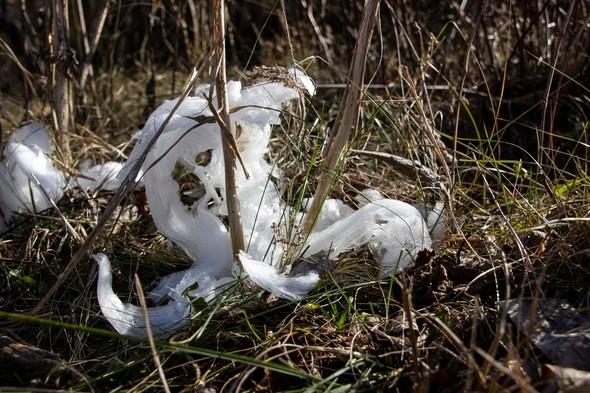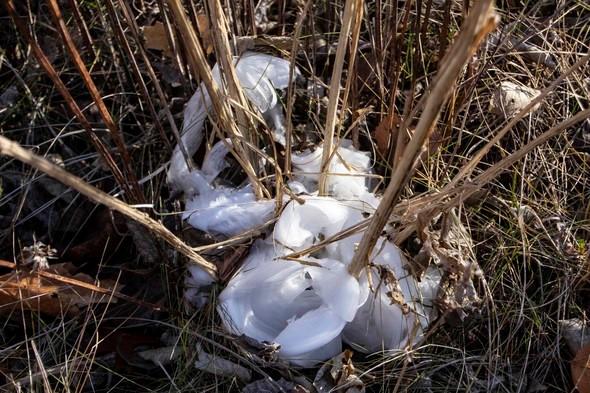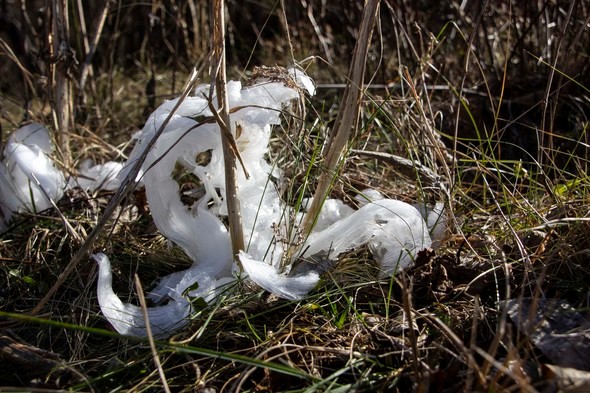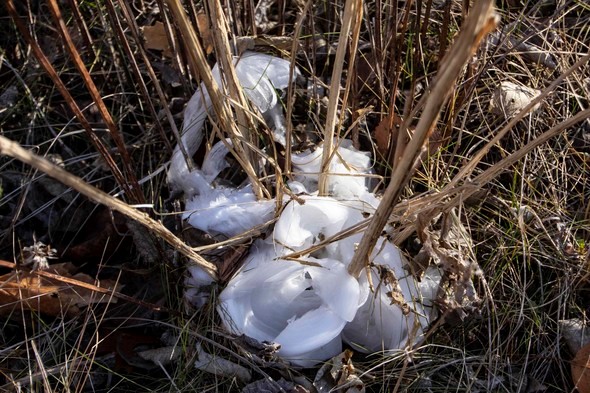
Xplor reconnects kids to nature and helps them find adventure in their own backyard. Free to residents of Missouri.


































Stay in Touch with MDC news, newsletters, events, and manage your subscription

Xplor reconnects kids to nature and helps them find adventure in their own backyard. Free to residents of Missouri.

A monthly publication about conservation in Missouri. Started in 1938, the printed magazine is free to residents of Missouri.




Kansas City, Mo. – Frail ice curls appear, ephemeral frost flowers, during cold mornings. But only specific native wildflowers host them. Another reason the Missouri Department of Conservation (MDC) suggests that people can enjoy using native plants in a landscape garden, even in winter.
Frost flowers appear during late autumn and early winter cold snaps at the stem base of a few native plant species. White crownbeard, dittany, and stinkweed are Missouri plants that most commonly produce frost flowers under the right conditions. The stems and roots of white crownbeard make it an especially reliable frost flower producer.
Plants go dormant and stems die when days shorten and temperatures fall in autumn. But some plants continue to uptake moisture from roots into the stem bases in late autumn. A hard freeze can cause splits in a still active plant base. Sap pushed upward by roots freezes as it is squeezed out through the stem cracks and meets cold air. Frost flowers in assorted patterns sometimes appear on sharply cold mornings following warmer days.
See them while you can, usually early in the morning unless sub-freezing cold lingers all day. Sunshine and a warm up will melt the ice crystals away.
Hikers and hunters sometimes see frost flowers afield. But the plants most prone to hosting them can also be incorporated into landscape plantings. White crownbeard is a tall plant that produces white flowers from August into October. Crownbeard grows tall given the right soil and sun, even six feet or more. They are best grown at the back of a native landscape planting bed. White crownbeard grows easily from seed. A gardener may need to learn to identify the plant in late summer in order to gather seed for planting.
One place to see frost flowers if conditions are right is in the heart of Kansas City. A sharp freeze may produce frost flowers on white crownbeard in the native plant garden at the Anita B. Gorman Discovery Center, 4750 Troost Ave. Frost flowers cease appearing in mid- to late winter as stems and roots cease functioning.
For more information on frost flowers, visit https://short.mdc.mo.gov/ZdH. To learn more about gardening with native plants, which benefit butterflies and bees, visit https://short.mdc.mo.gov/Zc8.